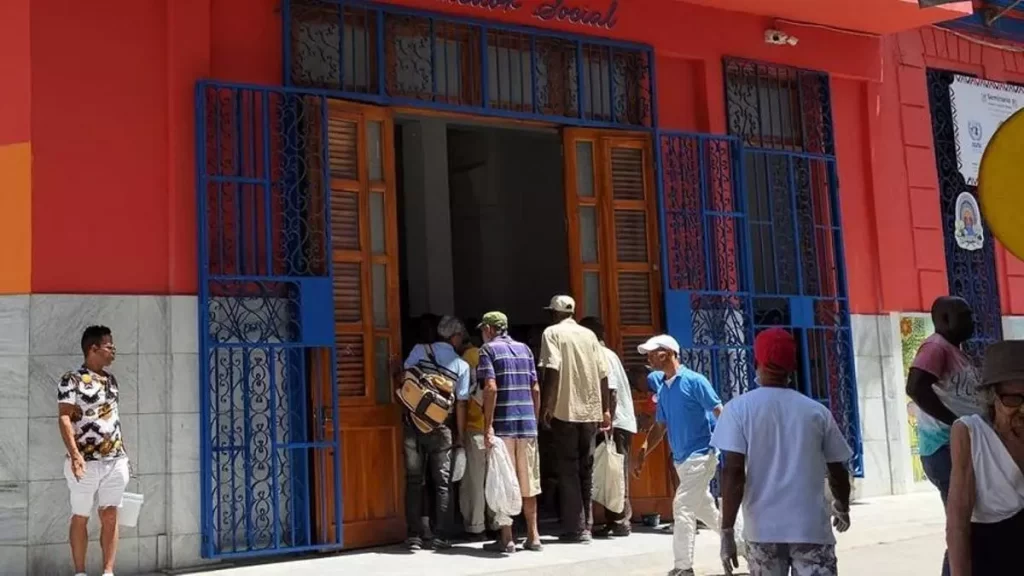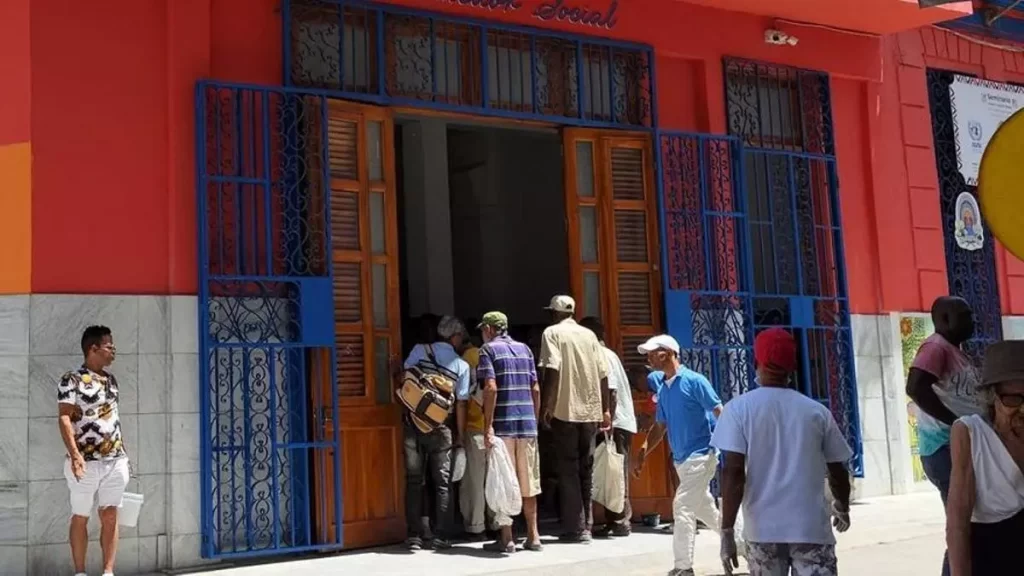The official press celebrates with “hope” the work of the project in a new report on begging

14ymedio, Havana, 26 April 2024 — In the second part of a report on beggars in Cuba, in which the authorities recognize that the State is not able to deal with the increasing number of homeless people, the official press celebrates with “hope” the work of the Cabildo Quisicuaba project. Its director, Enrique Alemán, who mixes spiritualism and Afro-Cuban religions with activism in favor of the regime, says that he offers meals to more than 4,000 “wanderers” and “vulnerable” people a day in a dining room in Havana. If this is true, it would mean feeding three people per minute for 24 hours each day.
It’s not the first time that the Government has praised Quisicuaba’s “social” work. Every time the media is there, even the international media like Reuters, they offer the same numbers.
Nor is it explained where the food and the resources to serve them come from
What Alemán does not mention, in a video released by Cubadebate, is that a year ago his soup kitchen on Maloja Street, in Central Havana, had, according to an article from the Swiss Embassy in Cuba, half as many people as now. The increase in homeless people, beggars or “people with wandering behaviors,” as the regime calls them, is a reality that the Government can no longer hide. Nor is it explained where the food and the resources to serve them come from.
A resident of Nuevo Vedado who once asked Quisicuaba for help told 14ymedio that not everything is rosy in the project. “I live alone and I’m now 76 years old, so I talked to a social worker to see if I could get any help. He told me about Quisicuaba and managed the delivery of a lunch,” he recalls.
“When the food arrived, it was disgusting. My dogs didn’t even like it. I remember that they brought it to me in a bike-taxi, although I think that now they no longer send couriers and you have to go to Centro Havana. I never asked for it again,” he says.
The first part of the report on beggars in Cuba gave an account of the problem: 39% of those who live in the Centers for the Care of Wandering People have not reached the age of 60; 60% sold their home and do not have the


